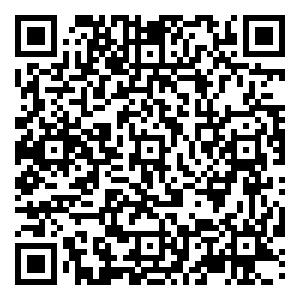| [1] |
孙晓杰, 王春莲, 李倩, 等. 中国生活垃圾分类政策制度的发展演变历程[J]. 环境工程, 2020, 38(8):65-70.
|
| [2] |
任中山, 陈瑛, 王永明. 生活垃圾分类对垃圾焚烧发电产业发展影响的分析[J]. 环境工程, 2021, 39(6):150-153.
|
| [3] |
王肇嘉, 秦玉, 顾军, 等. 生活垃圾焚烧飞灰二噁英控制技术研究进展[J]. 环境工程, 2021,39(10):116-123.
|
| [4] |
KRIZHEVSKY A, SUTSKEVER I, HINTON G E. Imagenet classification with deep convolutional neural networks[J]. Advances in neural information processing systems, 2012, 25:1097-1105.
|
| [5] |
SIMONYAN K, ZISSERMAN A. Very deep convolutional networks for large-scale image recognition[J]. arXiv:1409.1556, 2014.
|
| [6] |
SZEGEDY C, IOFFE S, VANHOUCKE V, et al. Inception-v4, inception-resnet and the impact of residual connections on learning[C]//The thirty-first AAAI conference on artificial intelligence. 2017.
|
| [7] |
TAN M X, LE Q V. Efficientnet:rethinking model scaling for convolutional neural networks[C]//the International Conference on Machine Learning. PMLR, 2019:6105-6114.
|
| [8] |
YANG M, THUNG G. Classification of trash for recyclability status[R]. CS229 Project Report, 2016, 2016:3.
|
| [9] |
ARAL R A, KESKIN R, KAYA M, et al. Classification of trashnet dataset based on deep learning models[C]//2018 IEEE International Conference on Big Data (Big Data). IEEE, 2018:2058-2062.
|
| [10] |
RABANO S L, CABATUAN M K, SYBINGCO E, et al. Common garbage classification using mobilenet[C]//2018 IEEE 10th International Conference on Humanoid, Nanotechnology, Information Technology, Communication and Control, Environment and Management (HNICEM). IEEE, 2018:1-4.
|
| [11] |
KENNEDY T. OscarNet:Using transfer learning to classify disposable waste[R]. CS230 Report:Deep Learning. Stanford University, CA, Winter, 2018.
|
| [12] |
OZKAYA U, SEYFI L. Fine-tuning models comparisons on garbage classification for recyclability[J]. arXiv:1908.04393, 2019.
|
| [13] |
KANG Z, YANG J, LI G, et al. An automatic garbage classification system based on deep learning[J]. IEEE Access, 2020, 8:140019-140029.
|
| [14] |
SHI C P, XIA R Y, WANG L G. A novel multi-branch channel expansion network for garbage image classification[J]. IEEE Access, 2020, 8:154436-154452.
|
| [15] |
ZENG M, LU X Z, XU W K, et al. PublicGarbageNet:a deep learning framework for public garbage classification[C]//2020 39th Chinese Control Conference (CCC). IEEE, 2020:7200-7205.
|
| [16] |
LI Y F, LIU W. Deep learning-based garbage image recognition algorithm[J]. Applied Nanoscience, 2021:1-10.
|
| [17] |
MITTAL G, YAGNIK K B, GARG M, et al. Spotgarbage:smartphone app to detect garbage using deep learning[C]//Proceedings of the 2016 ACM International Joint Conference on Pervasive and Ubiquitous Computing, 2016:940-945.
|
| [18] |
PROENÇA P F, SIMÕES P. TACO:Trash annotations in context for litter detection[J]. arXiv:2003.06975, 2020.
|
| [19] |
PANWAR H, GUPTA P K, SIDDIQUI M K, et al. AquaVision:automating the detection of waste in water bodies using deep transfer learning[J]. Case Studies in Chemical and Environmental Engineering, 2020, 2:100026.
|
| [20] |
GUO J B, LI Y X, LIN W Y, et al. Network decoupling:from regular to depthwise separable convolutions[J]. arXiv:1808.05517, 2018.
|
| [21] |
CHOLLET F. Xception:Deep learning with depthwise separable convolutions[C]//Proceedings of the IEEE Conference on Computer Vision and Pattern Recognition, 2017:1251-1258.
|
| [22] |
ZHAO Q T, SHENG T, WANG Y T, et al. M2det:A single-shot object detector based on multi-level feature pyramid network[C]//Proceedings of the AAAI Conference on Artificial Intelligence, 2019, 33(1):9259-9266.
|
| [23] |
HAASE D, AMTHOR M. Rethinking depthwise separable convolutions:How intra-kernel correlations lead to improved mobilenets[C]//Proceedings of the IEEE/CVF Conference on Computer Vision and Pattern Recognition. 2020:14600-14609.
|
| [24] |
GUO Y H, LI Y D, WANG L Q, et al. Depthwise convolution is all you need for learning multiple visual domains[C]//Proceedings of the AAAI Conference on Artificial Intelligence, 2019, 33(1):8368-8375.
|
| [25] |
HUA B S, TRAN M K, YEUNG S K. Pointwise convolutional neural networks[C]//Proceedings of the IEEE Conference on Computer Vision and Pattern Recognition, 2018:984-993.
|
| [26] |
HU J, SHEN L, SUN G. Squeeze-and-excitation networks[C]//Proceedings of the IEEE Conference on Computer Vision and Pattern Recognition, 2018:7132-7141.
|
| [27] |
KAR A, RAI N, SIKKA K, et al. Adascan:adaptive scan pooling in deep convolutional neural networks for human action recognition in videos[C]//Proceedings of the IEEE Conference on Computer Vision and Pattern Recognition, 2017:3376-3385.
|
| [28] |
LIN M, CHEN Q, YAN S. Network in network[J]. arXiv:1312.4400, 2013.
|

 点击查看大图
点击查看大图

 登录
登录 注册
注册 E-alert
E-alert

 登录
登录 注册
注册 E-alert
E-alert

 下载:
下载:
